SEO sitelinks can improve the appearance of your snippet in Google search results, which means higher Click-through Rates (CTR) and more traffic.
Although you cannot directly specify sitelinks (they are automated by the Google algorithm), there are a number of ways to help Google pick the right sitelinks for your website.
In this post, you will learn what are SEO sitelinks, why they are important, and how to create Google sitelinks for your website.
What Are Sitelinks?
SEO Sitelinks are links shown below the description of your site in Google Search Results that point to other pages on your website.
Sitelinks are chosen by Google algorithms and are only shown when they are useful to the user.
Here is an example of how sitelinks look in Google Search Results when you search for our company name in Google [reliablesoft].

As you can see, below the site title and description, it shows links pointing to what Google believes are the most useful pages of our website.
This is how sitelinks look on Google mobile SERPs. The example is from our website and the official Google Blog. Notice the differences between the sitelinks chosen for our website on desktop and mobile.
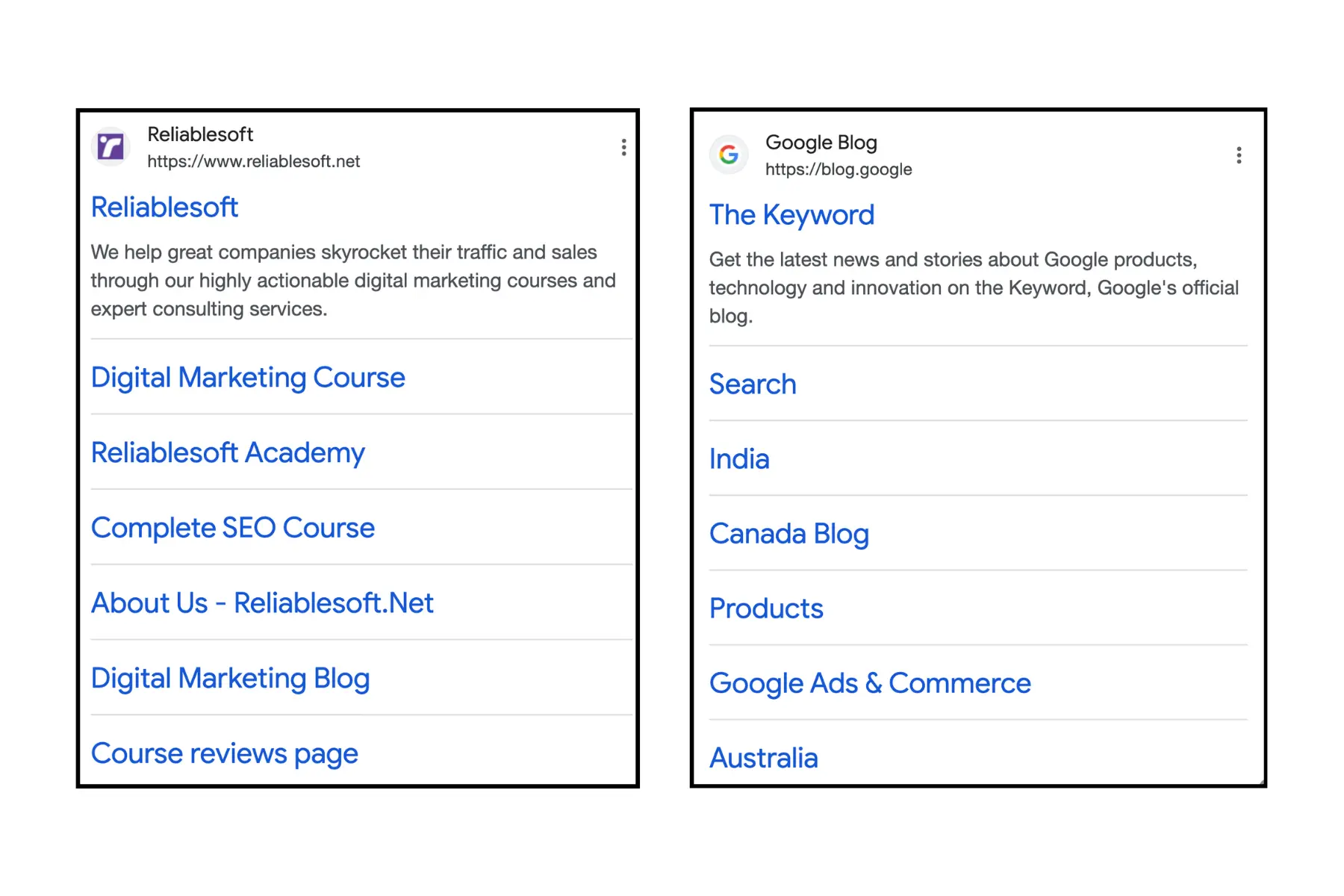
Sitelinks are typically shown when you search for a brand name on Google but they are also shown for individual posts.
Here is another example when you search for “digital marketing certificate” on Google.
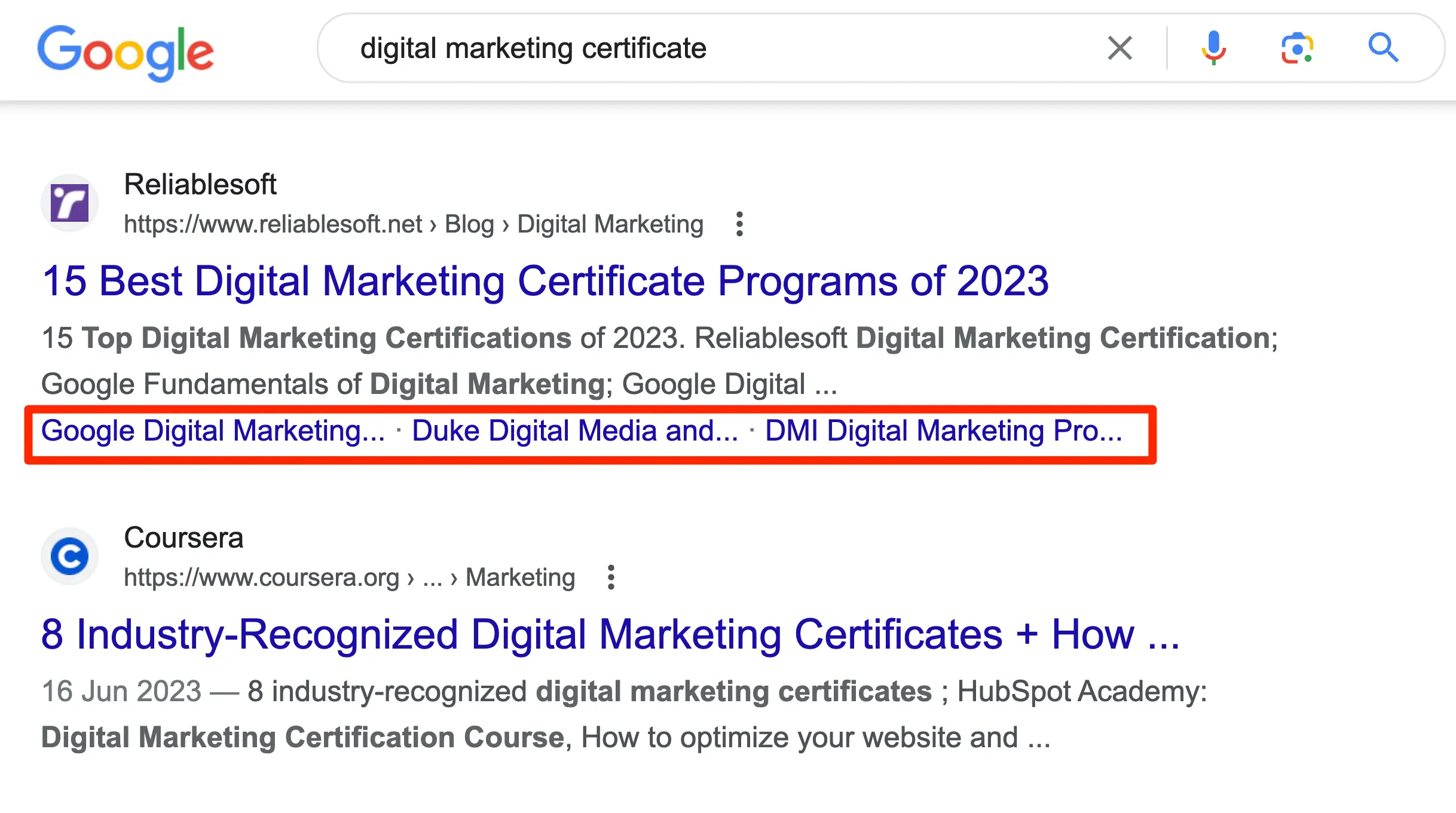
As you can see in the example above, besides the post title and description, Google also shows several links that point to sections within the same post.
Anatomy of Google Search Snippets
To help you understand how sitelinks work, let us quickly examine the different parts that make a search results snippet.
A Google search snippet consists of the following parts:
- Site Name
- URL
- Title
- Description
- Sitelinks
For the first four parts, there are ways to control their appearance.
As part of your on-page SEO, you can optimize your titles, make your URLs SEO-friendly, and provide better descriptions.
For the last part, you cannot directly select what is shown as a sitelink. It’s up to Google to decide whether to show or not sitelinks for the particular search query.
In other words, Google may show sitelinks for a website for certain queries only, if their algorithm believes that it will be useful to the users.
For more tips on improving your performance in Google search, enroll in our SEO Course. It's the most comprehensive SEO course you can find on the web, loaded with actionable tips and practical advice.
Why Are Sitelinks Important?
Why are sitelinks important? If you cannot directly influence sitelinks, then why bother?
When Google decides to show sitelinks along with your search snippet, there are a number of advantages.
Increase in Click-Through Rates (CTR)
Sitelinks increase the amount of space your entry occupies in the search results, and this means more visibility and higher CTRs.
The concept is similar to sitelinks you can add through ad extensions in Google AdWords when running PPC Campaigns.
By adding sitelinks and other extensions, you increase the space of your ads and the possibility of being seen by users.
Get visits to internal pages and not just the homepage
When sitelinks are shown for your brand name, users can directly go to your inner pages without having to visit your homepage.
This provides users with a better experience and you get traffic to the pages that are more important for your business/website.
Users don’t have to enter your website and find their way to your product or sales pages; they can click and go directly from the search results.
It’s a signal of high Google trust
Google does not show sitelinks for all websites. When showing sitelinks when users search for your domain name or particular queries, it’s a signal of trust.
This is good for your SEO and your business’s reputation on the Internet.
Sitelinks improve brand awareness
When users search for your brand name in Google and see a list of sitelinks, they can immediately learn more about your business, products, and services without having to search for this info on your website.
For example, when you search for our brand name, you can see at a glance that besides Digital Marketing Services, we are also offering a digital marketing course and an SEO Course.
Most people wouldn’t know this information unless they visited one of the inner pages of our website.
I have mentioned repeatedly that you cannot directly specify which pages Google should use as sitelinks. They are chosen automatically by the Google algorithm based on the user query.
Nevertheless, there are a number of things you can do to help Google understand your site structure and content, and this, in turn, increases your chances of getting sitelinks in the search results.
How to Create Google Sitelinks For Your Website?
- Make sure that you can rank for your brand name
- Create a simple and easy-to-understand site structure
- Link important pages from your homepage
- Define proper titles and descriptions for sitelink candidate pages
- Use internal linking to help Google identify your important pages
- Add sitelink candidate pages in your sidebar
- Add a table of contents for long-form posts with in-page links
- Optimize your website for technical and on-page SEO
1. Make sure that you can rank for your brand name
In the majority of cases, this is easy to do. When you search Google for your brand name, you should normally appear on top of the results.
If this is not happening, then you need to:
- Check robots.txt and make sure that Google can access and index your website without any problems.
- Make sure that your brand name is included in your homepage title.
- Make sure that your brand name is visible as text on your homepage and that it’s wrapped with the HTML h1 tag.
- Ensure your homepage has enough text content with information about your brand.
2. Create a simple and easy-to-understand site structure
The site structure is perhaps the most important factor regarding sitelinks. You must provide Google and your users with a simple and easy-to-follow site structure.
The way search engines work is that during the crawling and indexing process, they will visit your homepage and then follow any links they find in your menu, XML sitemap, and content to discover more pages from your website.
In many cases, Google will create the sitelinks from items in your menu, so you need to make sure that:
- Your website has a hierarchical site structure with no more than 3 levels.
- The menu of your website replicates the site structure. Don’t provide users with a different menu than your structure. These two have to be in sync for the best results.
- The most important pages of your website (and pages you want to show as sitelinks) are included in your main menu.
Here is a part of the Google guidelines on sitelinks:

3. Link important pages from your homepage
Besides adding sitelink candidate pages in your menu, you should also add text links pointing to them from your homepage.
For example, if you visit our homepage, you will notice we have links pointing to all our course pages.
Links should not be wrapped in images but should be in text, for Google to understand them.
Also, make sure that you use proper anchor text for the links. For example, if you want to link to your Academy page from your homepage, use the word “Academy” or “Digital Marketing Academy” and not something else like 'Click here' or 'learn more'.
4. Define proper titles and descriptions for sitelink candidate pages
Besides using the proper anchor text when linking to key pages, it’s also important to use the correct page titles and meta descriptions.
For example, if you want your ABOUT US page to appear as a sitelink in Google, make sure that the page title is 'About Us' or 'About Reliablesoft'and, not anything else, and that it has a relevant meta description.
5. Use internal linking to help Google identify your important pages
Internal linking is one of the most powerful ways to help Google pick pages from your website and use them as sitelinks.
Internal linking is great for SEO as it enhances the user experience, which, in turn, creates several added advantages.
The rules are simple:
- Use text to create your internal links
- Use proper anchor text
- Build more internal links to the pages you want to appear as sitelinks. In other words, the pages that have many internal links pointing to them, are likely to appear as sitelinks.
You can check the internal links report in Google Search Console to see the number of internal links per page.
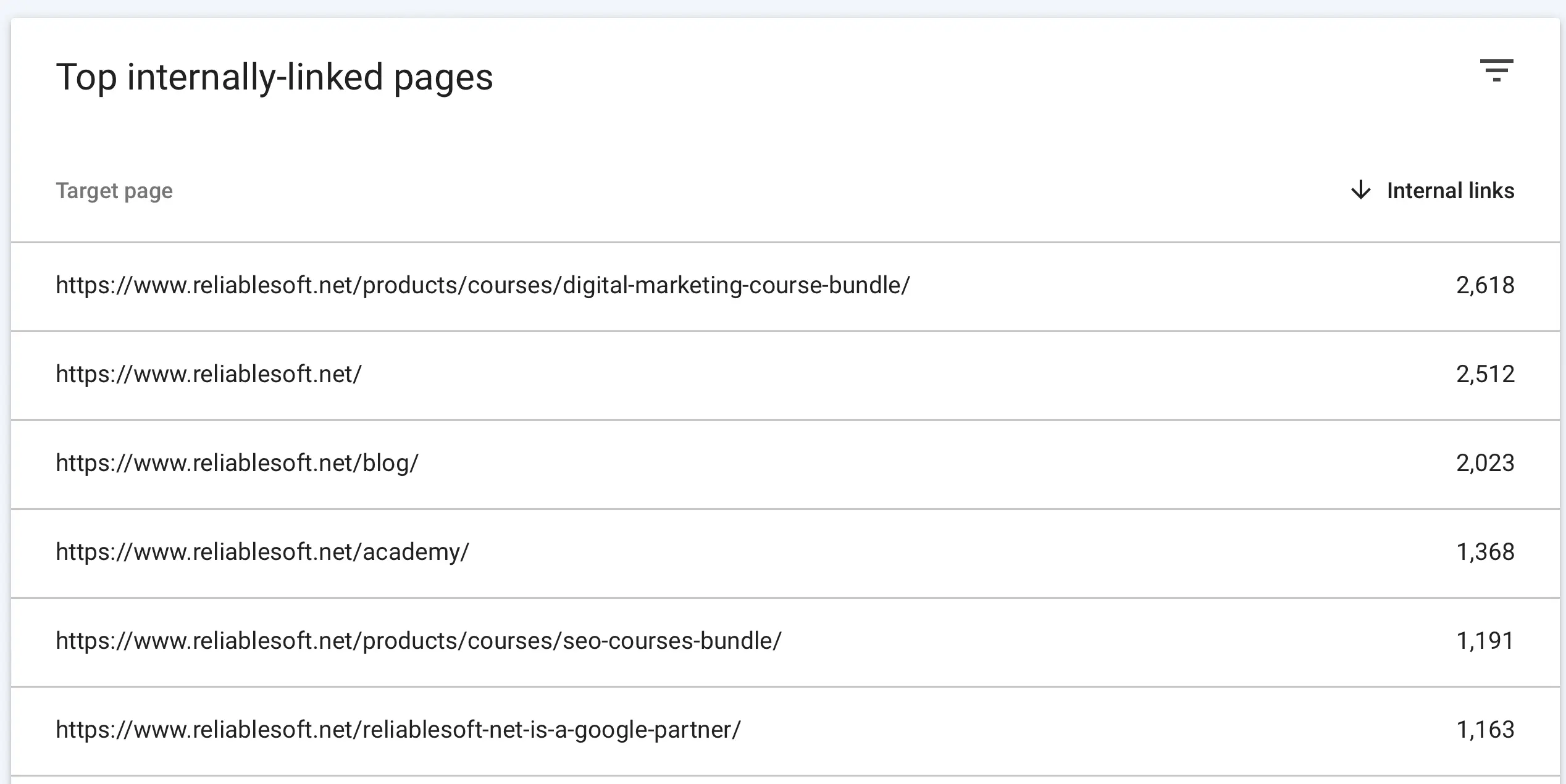
6. Add sitelink candidate pages in your sidebar
Most websites have sidebars for their internal pages and one of the best uses of a sidebar is to use it to redirect both users and Google to visit the pages you want.
The fact that a sidebar widget appears on all posts, sends the signal to Google that these are some of the most important pages of the site, and no wonder that they also appear as sitelinks (depending on the user query).
7. Add a table of contents for long-form posts with in-page links
I mentioned above that sitelinks can appear for individual posts, not just for the homepage or brand-related terms.
One way to increase your chances of getting a sitelink for your posts is to add a table of contents at the top of the post with links pointing to sections on the same page.
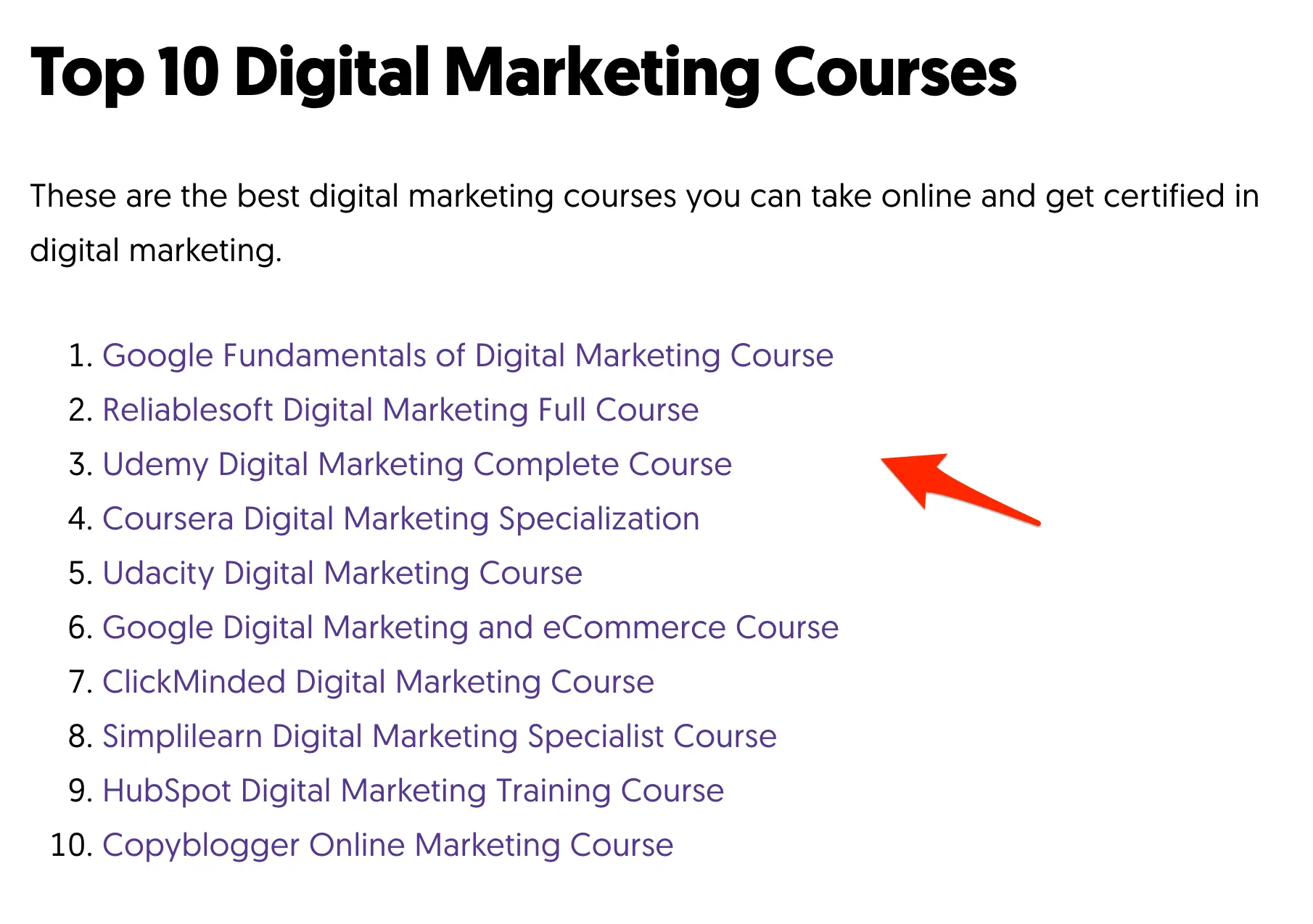
The same rules apply as in the case of internal linking, i.e., use proper anchor text for the links and use text links and not images.
8. Optimize your website for technical and on-page SEO
It goes without saying that for Google to trust your website and give you more space in the search results, it must be of high quality.
This means that you need to work on your technical SEO and on-page SEO and make sure that everything is optimized as it should be.
Google will not show sitelinks for websites with low-quality content or participate in spam behavior.
Sitelinks FAQ
What should you know about sitelinks on mobile?
With the introduction of the mobile-first index, Google will treat mobile pages in a slightly different way than desktop.
If you have a responsive website, you have nothing to worry about. If not, you must ensure your mobile website's content and structure are the same (or similar) as the desktop.
Any links on the desktop homepage should also be on your mobile homepage. Otherwise, Google may not show the same sitelinks for mobile users.
For more details, visit our mobile SEO guide.
Can I remove sitelinks from Google Search?
Previously, you could remove sitelinks using the “Demote Sitelinks” settings in Google Search Console, but this option is no longer available.
According to Google, if you want to remove a page from appearing in sitelinks, you should remove it completely from Google search by adding a “noindex” meta tag.
How can I get the sitelinks search box to appear with my snippet?
One of the features that can enhance the appearance of your sitelinks is the search box.
Look at the example below:
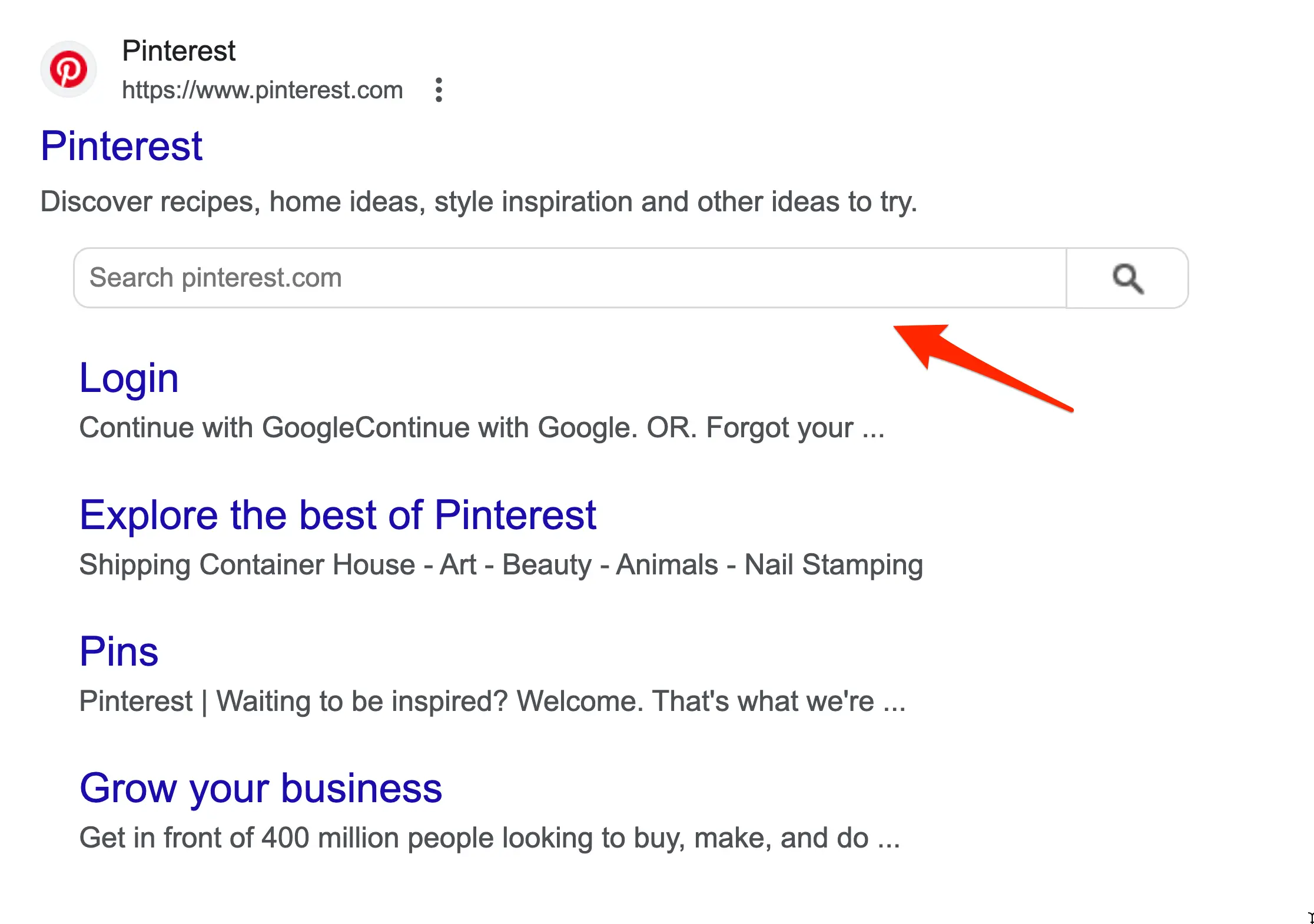
Google is showing the search box as part of a site’s sitelinks. To get a search box in the search result pages, you need to install a working search engine on your website and add the proper structured data markup.
Conclusion
Sitelinks can dramatically improve the appearance of your snippet in Google search results. This translates to more clicks and traffic to your website.
Although you cannot specify which pages you want to appear as sitelinks, there are some techniques you can follow to help Google make the correct choices.
If you follow solid SEO practices (like the ones explained above), it is almost guaranteed that Google will show sitelinks for searches related to your brand name, and if you get your SEO correct for your posts and pages, you may get sitelinks for individual posts as well.



